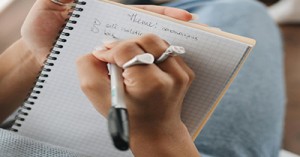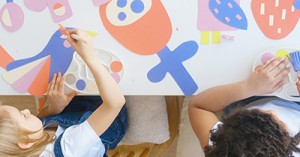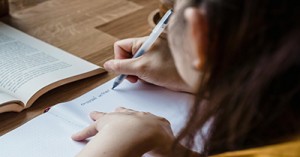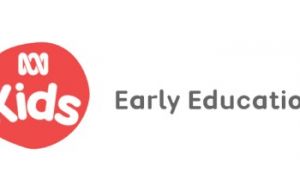Summative assessments are more than end-point reflections—they’re storytelling tools that honour each child’s journey. They help educators celebrate growth, identify emerging skills, and co-plan intentional next steps. This guide is designed for quick glances during documentation, team huddles, or family meetings, keeping your language strengths-based, specific, and emotionally resonant.
Use it to:
- Anchor your observations in EYLF outcomes
- Spark rich conversations with families and colleagues
- Guide intentional planning that supports each child’s unique trajectory
Structure Guide
| Section | What to Include | Example |
|---|---|---|
| Intro | Name, age, room, attendance pattern | "Ava, age 3, attends the Koala Room 4 days/week." |
| Learning Overview | EYLF-aligned highlights across domains | "Ava explores patterns and rhythm through music and movement, showing curiosity and joy." |
| Strengths | What the child excels at | "Ava initiates imaginative play and confidently shares her ideas with peers." |
| Emerging Skills | Areas still developing | "She is learning to manage frustration during turn-taking games." |
| Next Steps | Intentional planning ideas | "Introduce visual turn-taking cues and co-create group play rules with Ava." |
Prompt Starters
Use these to frame observations with warmth and clarity:
- “[Child’s name] demonstrates curiosity when…”
- “Shows persistence by…”
- “Engages in cooperative play through…”
- “Expresses ideas clearly during…”
- “Is developing confidence in…”
- “Responds positively to…”
- “Is beginning to explore…”
- “Enjoys leading others in…”
EYLF Outcome Snapshots
| Outcome | Example Indicators |
|---|---|
| Identity | Initiates play, expresses preferences, shows pride in achievements |
| Community | Collaborates in group tasks, shows empathy, contributes to shared routines |
| Well-being | Manages emotions, shows resilience, engages in physical activity with confidence |
| Learning | Explores, experiments, problem-solves, shows curiosity and focus |
| Communication | Uses language to connect, expresses ideas, engages with texts and symbols |
Age-Specific Examples
Infants (0–2 years)
- “Luca shows persistence by reaching for a toy repeatedly during tummy time.”
- “Is developing confidence in exploring new textures during sensory play.”
- “Demonstrates curiosity when watching peers during group singing.”
Toddlers (2–3 years)
- “Maya engages in cooperative play through shared block building.”
- “Expresses ideas clearly during pretend cooking with peers.”
- “Is beginning to manage transitions with visual cues.”
Preschoolers (3–5 years)
- “Eli demonstrates curiosity when investigating shadows outdoors.”
- “Shows resilience by trying again after a tower falls.”
- “Uses language to connect during group storytelling.”
Writing Tips
- Use strengths-based language: Focus on what the child can do
- Be specific and family-friendly: Avoid jargon, use clear examples
- Include observed moments: Anchor statements in real interactions
- Keep it concise and meaningful: Aim for clarity over length
How to Use This Card
- Keep a printed copy in your planning folder or documentation station
- Use during team huddles to align language and goals
- Share with families to co-reflect and co-plan
- Adapt for digital portfolios or summative templates
Further Reading
Summative Assessments In Early Childhood
Guide To Writing Summative Assessments
Summative Assessment Cheat Sheet For Educators
Assessments In Early Childhood Education







 Here is the list of the EYLF Learning Outcomes that you can use as a guide or reference for your documentation and planning. The EYLF
Here is the list of the EYLF Learning Outcomes that you can use as a guide or reference for your documentation and planning. The EYLF The EYLF is a guide which consists of Principles, Practices and 5 main Learning Outcomes along with each of their sub outcomes, based on identity,
The EYLF is a guide which consists of Principles, Practices and 5 main Learning Outcomes along with each of their sub outcomes, based on identity, This is a guide on How to Write a Learning Story. It provides information on What Is A Learning Story, Writing A Learning Story, Sample
This is a guide on How to Write a Learning Story. It provides information on What Is A Learning Story, Writing A Learning Story, Sample One of the most important types of documentation methods that educators needs to be familiar with are “observations”. Observations are crucial for all early childhood
One of the most important types of documentation methods that educators needs to be familiar with are “observations”. Observations are crucial for all early childhood To support children achieve learning outcomes from the EYLF Framework, the following list gives educators examples of how to promote children's learning in each individual
To support children achieve learning outcomes from the EYLF Framework, the following list gives educators examples of how to promote children's learning in each individual Reflective practice is learning from everyday situations and issues and concerns that arise which form part of our daily routine while working in an early
Reflective practice is learning from everyday situations and issues and concerns that arise which form part of our daily routine while working in an early Within Australia, Programming and Planning is reflected and supported by the Early Years Learning Framework. Educators within early childhood settings, use the EYLF to guide
Within Australia, Programming and Planning is reflected and supported by the Early Years Learning Framework. Educators within early childhood settings, use the EYLF to guide When observing children, it's important that we use a range of different observation methods from running records, learning stories to photographs and work samples. Using
When observing children, it's important that we use a range of different observation methods from running records, learning stories to photographs and work samples. Using This is a guide for educators on what to observe under each sub learning outcome from the EYLF Framework, when a child is engaged in
This is a guide for educators on what to observe under each sub learning outcome from the EYLF Framework, when a child is engaged in The Early Years Learning Framework describes the curriculum as “all the interactions, experiences, activities, routines and events, planned and unplanned, that occur in an environment
The Early Years Learning Framework describes the curriculum as “all the interactions, experiences, activities, routines and events, planned and unplanned, that occur in an environment


